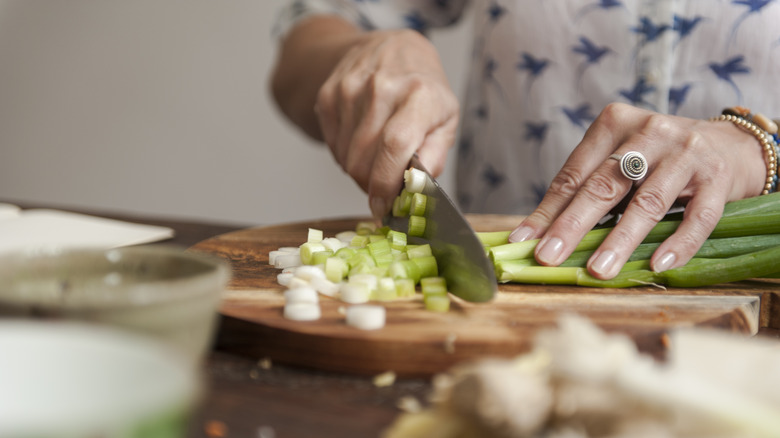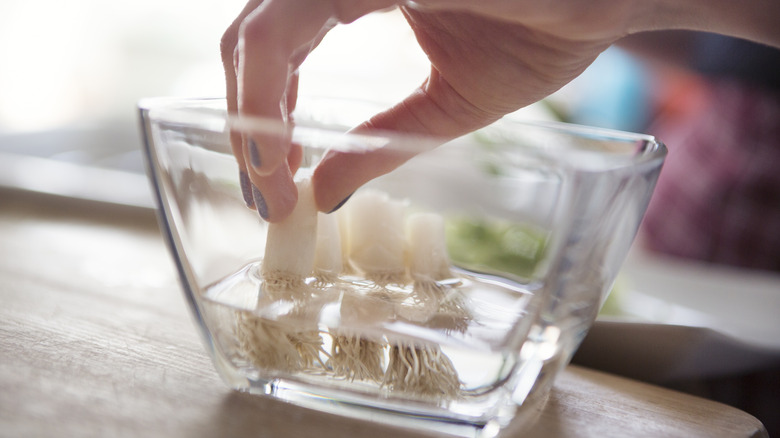Why You Should Stop Throwing Out The White Parts Of Scallions
Many home cooks prefer the green tops of scallions and throw away the white sections (or roots) not realizing they contain substantial culinary and nutritional value. Think of them as the unsung heroes of your kitchen. Originally from Central Asia, scallions have been around for ages and have found their way into kitchens worldwide for their sharp and vibrant flavor. The white part of the scallion sits at the root and offers a more oniony taste than the green portion. Instead of throwing them away, why not use them to add a little pizzazz to your dishes?
The white portions are not merely scraps to be thrown away. These delicious little bulbs are loaded with vitamins, which are necessary for healthy skin and a robust immune system. Antioxidants, which are essential for lowering the risk of numerous diseases and other health issues, are also present in the white roots. In addition, the roots provide a good quantity of dietary fiber, which promotes a healthy digestive tract. By using the entire scallion, you get all of its nutritional content in addition to mouthwatering flavors.
How to use and store scallion roots
There are many creative ways to use scallions, and it's no different with the white parts. For meals, you can chop them to use as a punchy garnish, or use them whole in slow-cooker recipes where their pungent flavor can fully permeate the dish. Scallion roots are all-purpose vegetables and can be used to make tasty broths and marinades; they can even be eaten raw for various dishes — just be prepared for the eye-popping taste. Make our popular flaky scallion pancake recipe your own by using the white roots in the scallion mixture. This allows you to maximize the use of the whole plant and support a more sustainable kitchen practice by not wasting any food.
Growing and storing scallions is easier than you might think, especially if you focus on the white parts. If you want to grow more, simply place the white bulbs, roots attached, in a container of water and set them in a sunny place. Within a few days, you'll see new green shoots sprouting, which will be ready for harvesting in just a couple of weeks. For storage, keep the white parts in a jar with a little water at the bottom and a plastic bag on top. This method can keep them fresh for about four days in the fridge. These simple steps ensure you always have fresh scallions on hand, while cutting down on waste and keeping your meals oh-so-delicious.

